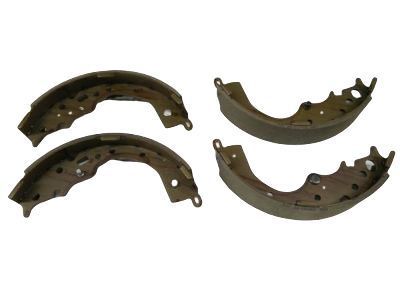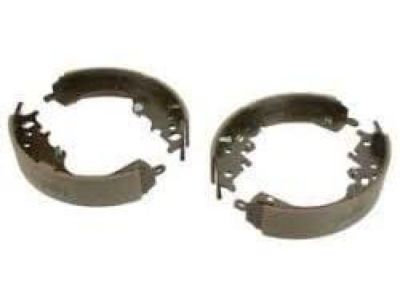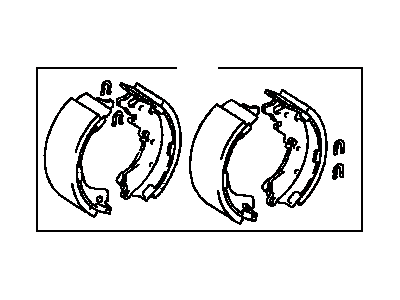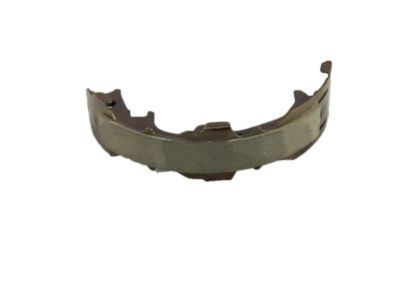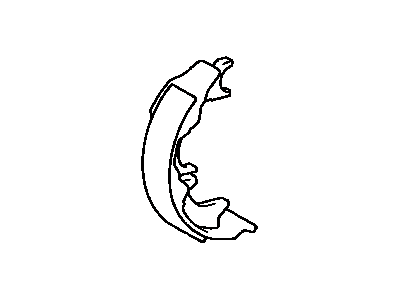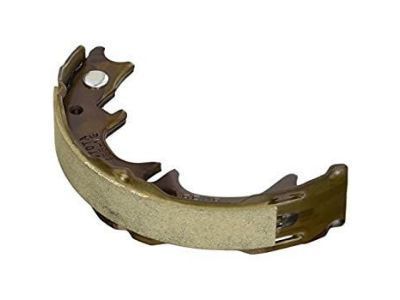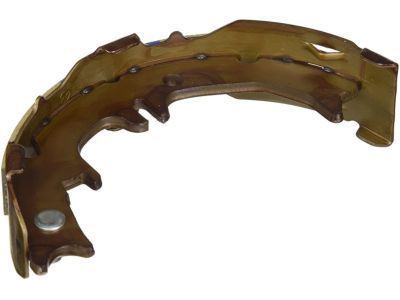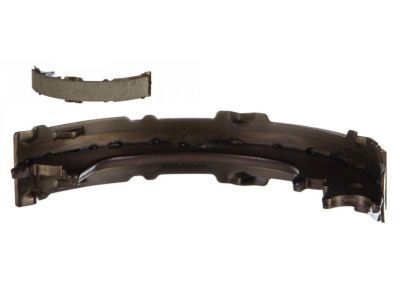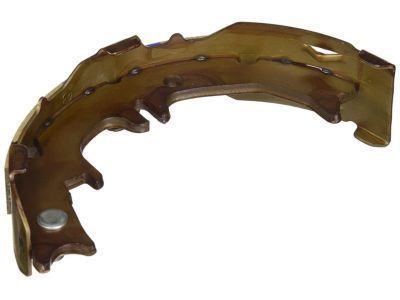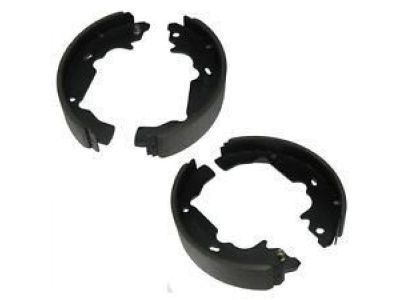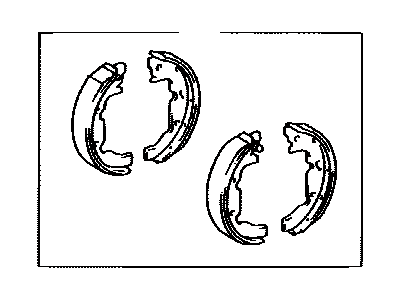

My Garage
My Account
Cart
Genuine Toyota Sienna Brake Shoe Set
Brake Shoe- Select Vehicle by Model
- Select Vehicle by VIN
Select Vehicle by Model
orMake
Model
Year
Select Vehicle by VIN
For the most accurate results, select vehicle by your VIN (Vehicle Identification Number).
9 Brake Shoe Sets found
Toyota Sienna Rear Brake Shoe Kit
Part Number: 04495-08030$85.42 MSRP: $120.42You Save: $35.00 (30%)Ships in 1-2 Business DaysToyota Sienna Shoe Assembly, Parking Brake, LH
Part Number: 46540-44010$47.35 MSRP: $66.19You Save: $18.84 (29%)Ships in 1-3 Business DaysToyota Sienna Shoe Assembly, Parking Brake, RH Or Center
Part Number: 46550-08010$33.07 MSRP: $46.23You Save: $13.16 (29%)Ships in 1-3 Business DaysToyota Sienna Shoe Assembly, Parking B
Part Number: 46540-0E020$39.38 MSRP: $55.05You Save: $15.67 (29%)Ships in 1-3 Business DaysToyota Sienna Shoe Assembly, Parking Brake, LH
Part Number: 46590-08010$33.07 MSRP: $46.23You Save: $13.16 (29%)Ships in 1-3 Business DaysToyota Sienna Shoe Assembly, Parking B
Part Number: 46550-0E020$35.57 MSRP: $49.71You Save: $14.14 (29%)Ships in 1-3 Business DaysToyota Sienna Shoe Assembly, Parking B
Part Number: 46540-48040$39.38 MSRP: $55.05You Save: $15.67 (29%)Ships in 1-3 Business DaysToyota Sienna Shoe Assembly, Parking B
Part Number: 46590-0E020$35.57 MSRP: $49.71You Save: $14.14 (29%)Ships in 1-3 Business Days
Toyota Sienna Brake Shoe Set
If you are in demand for superior quality and affordable OEM Toyota Sienna Brake Shoe Set, then shop with us! We own a wide range of the reduced-priced genuine Toyota Sienna Brake Shoe Set. You can purchase in confidence as all parts come with a manufacturer's warranty. Any issues with our products? No need to worry as we have a hassle-free return policy to guide you every step of the way.
Toyota Sienna Brake Shoe Set Parts Questions & Experts Answers
- Q: How to replace the Brake Shoe Set on the rear of a Toyota Sienna?A:Loosen the wheel lug nuts, raise the rear of the vehicle, and support it securely on jackstands while blocking the front wheels to prevent rolling. Release the parking brake and remove the wheel, ensuring that all four rear brake shoes are replaced simultaneously, but work on one brake assembly at a time to avoid mixing parts. Follow the illustrations for the brake shoe replacement procedure, marking the relationship of the drum to the hub to maintain dynamic balance, and install the adjuster lever over the pin on the front shoe. If the brake drum cannot be easily removed, ensure the parking brake is fully released; if it remains stuck, retract the brake shoes by removing the plug from the backing plate and using screwdrivers to adjust the star wheel. Before reinstalling the drum, check for cracks, score marks, deep scratches, and hard spots, as any of these conditions may require resurfacing at an automotive machine shop. If resurfacing is not an option due to excessive wear, new drums will be necessary, but at a minimum, remove any glaze with emery cloth. Install the brake drum on the axle flange, followed by the wheel and lug nuts, then lower the vehicle and tighten the lug nuts to the specified torque. Make several forward and reverse stops and operate the parking brake to adjust the brakes until satisfactory pedal action is achieved, and carefully check the operation of the brakes before driving.
Related Toyota Sienna Parts
Browse by Year
2020 Brake Shoe Set 2019 Brake Shoe Set 2018 Brake Shoe Set 2017 Brake Shoe Set 2016 Brake Shoe Set 2015 Brake Shoe Set 2014 Brake Shoe Set 2013 Brake Shoe Set 2012 Brake Shoe Set 2011 Brake Shoe Set 2010 Brake Shoe Set 2009 Brake Shoe Set 2008 Brake Shoe Set 2007 Brake Shoe Set 2006 Brake Shoe Set 2005 Brake Shoe Set 2004 Brake Shoe Set 2003 Brake Shoe Set 2002 Brake Shoe Set 2001 Brake Shoe Set 2000 Brake Shoe Set 1999 Brake Shoe Set 1998 Brake Shoe Set
